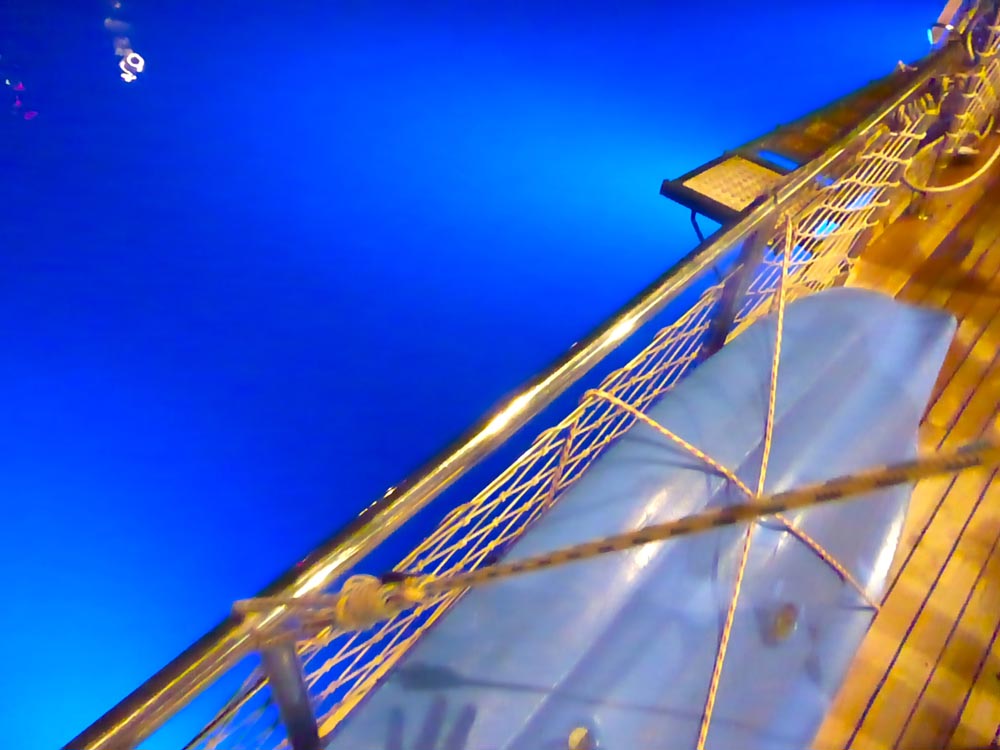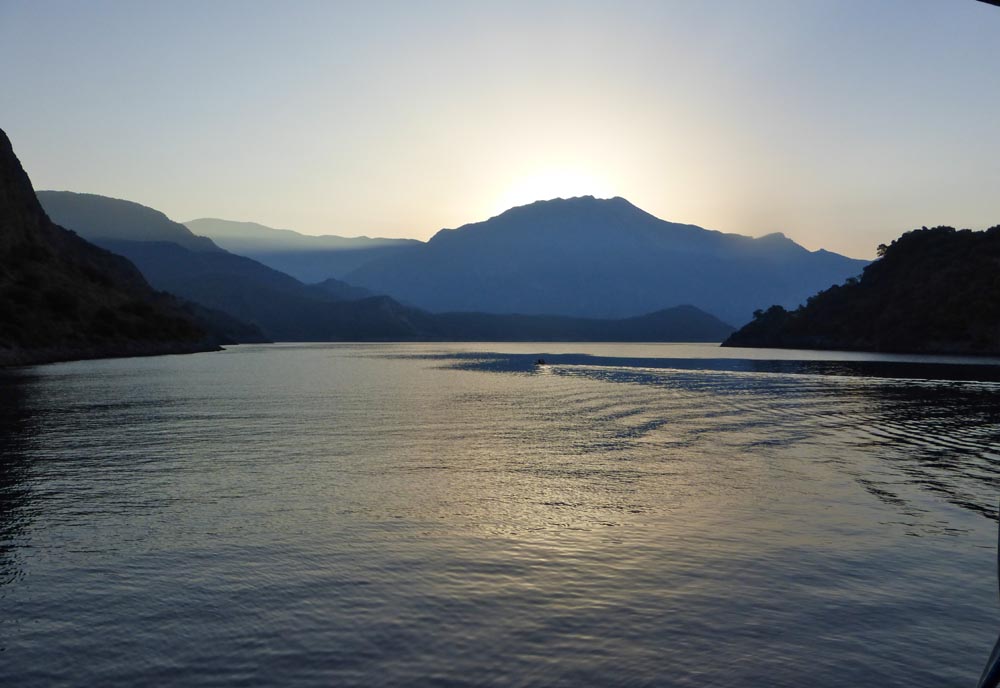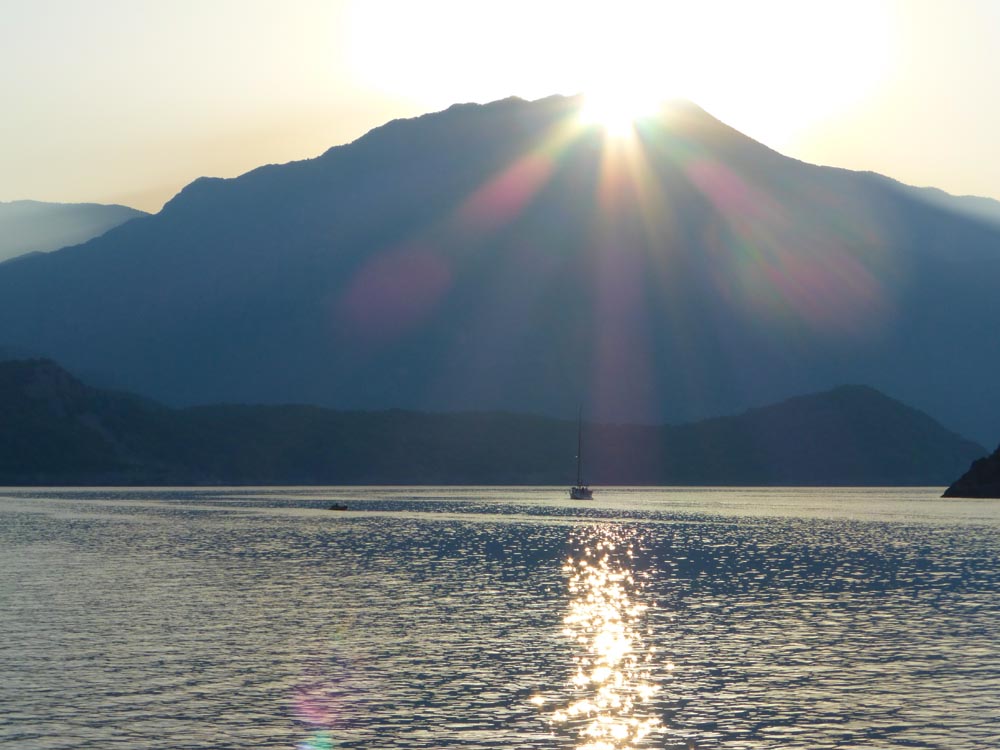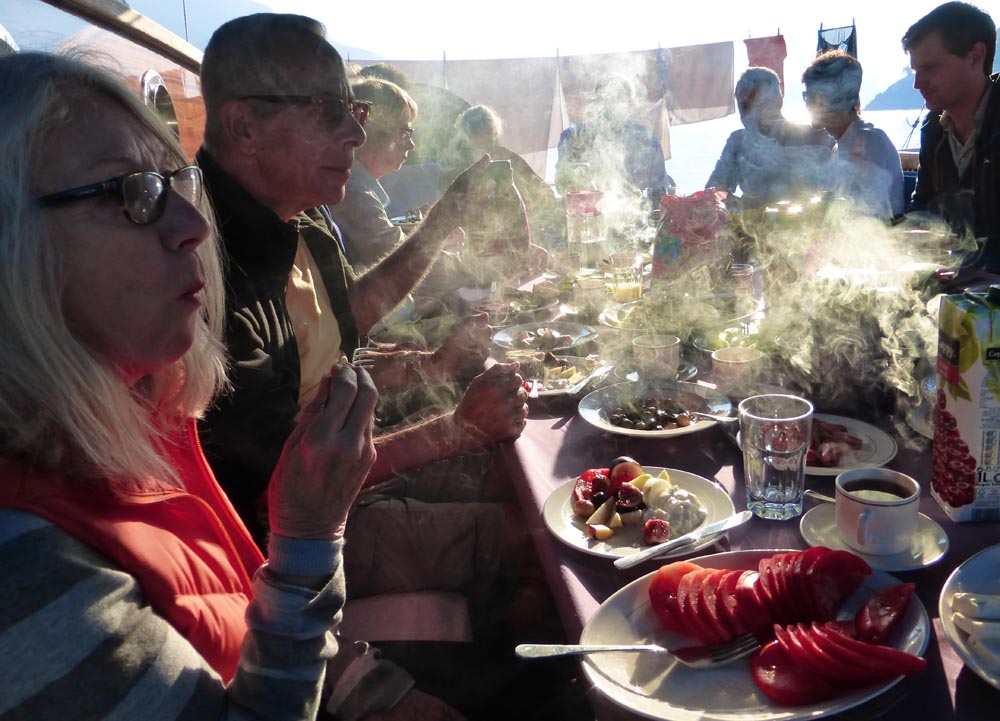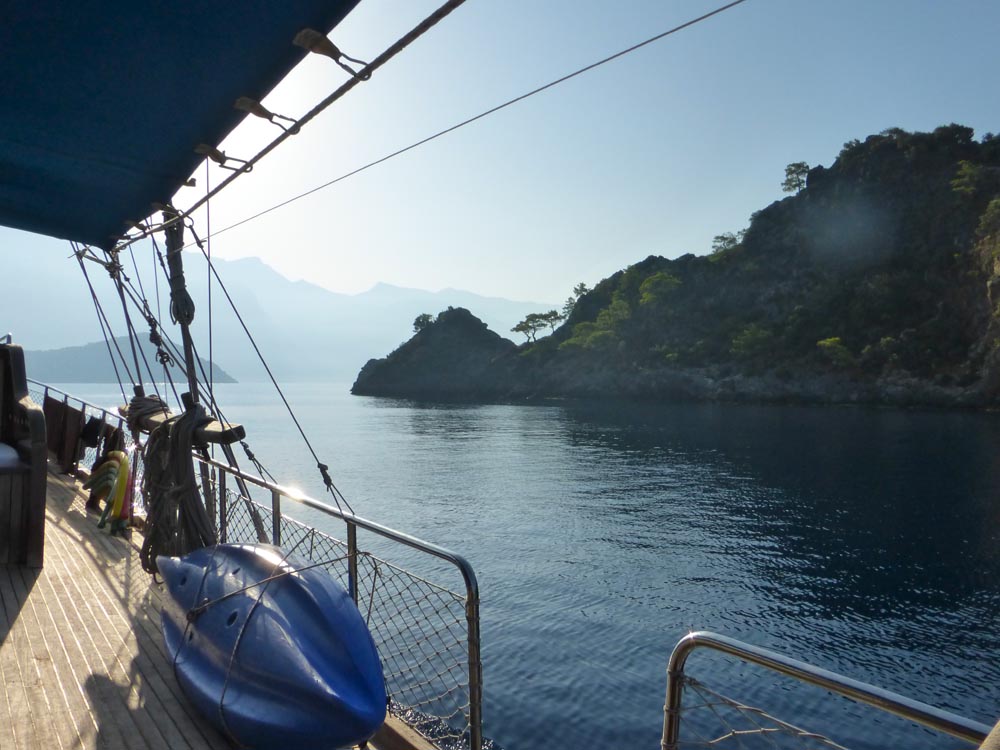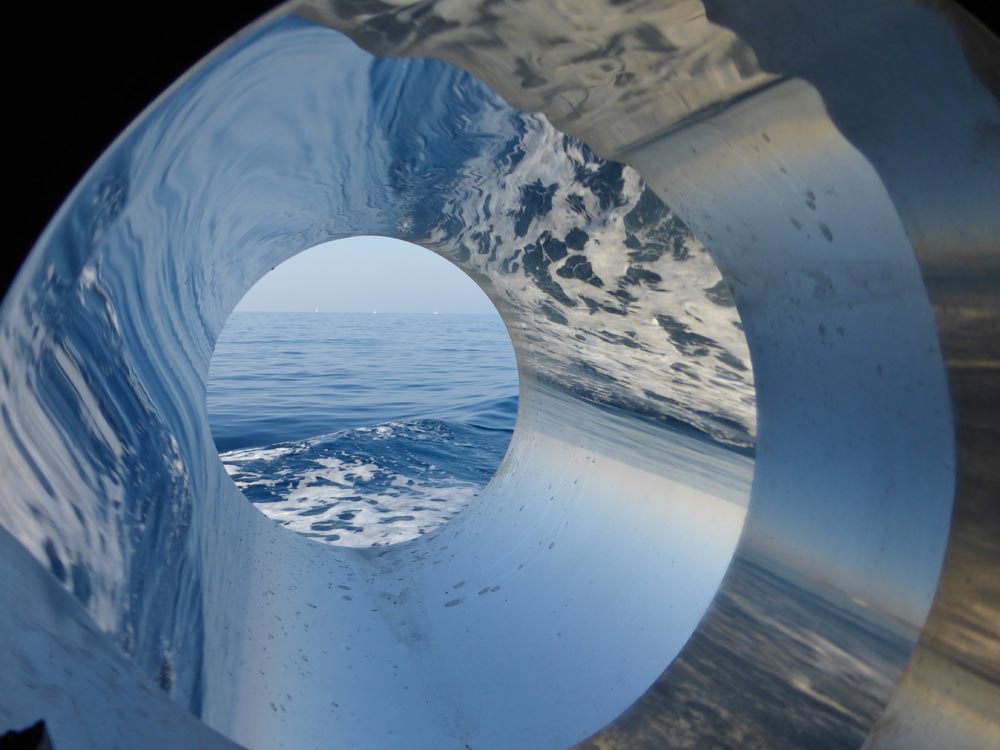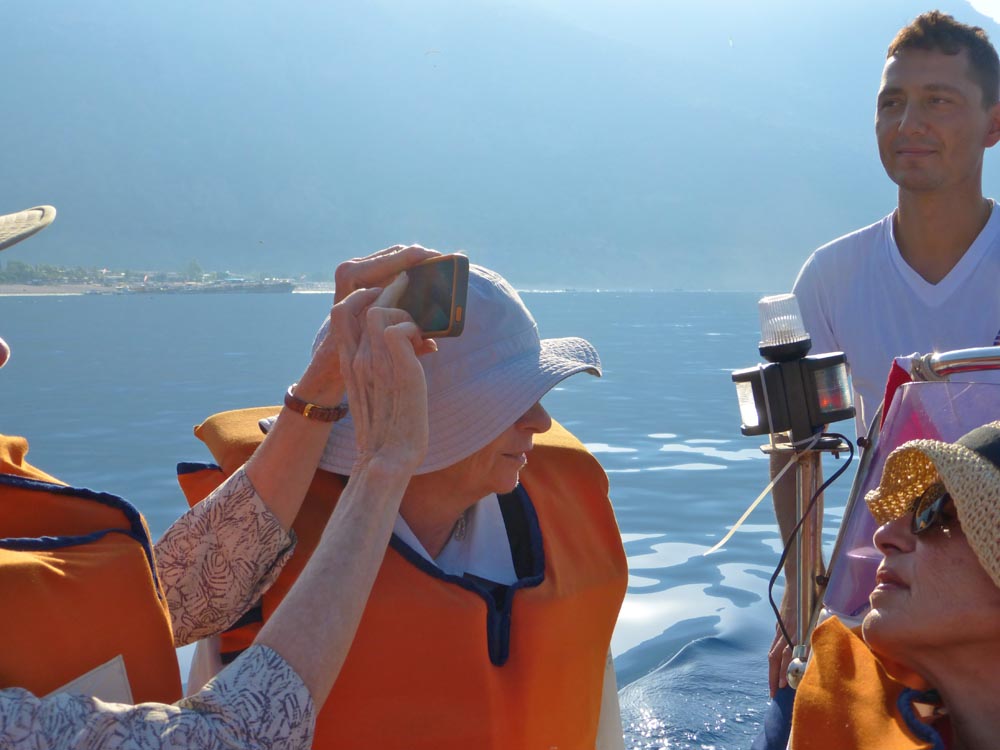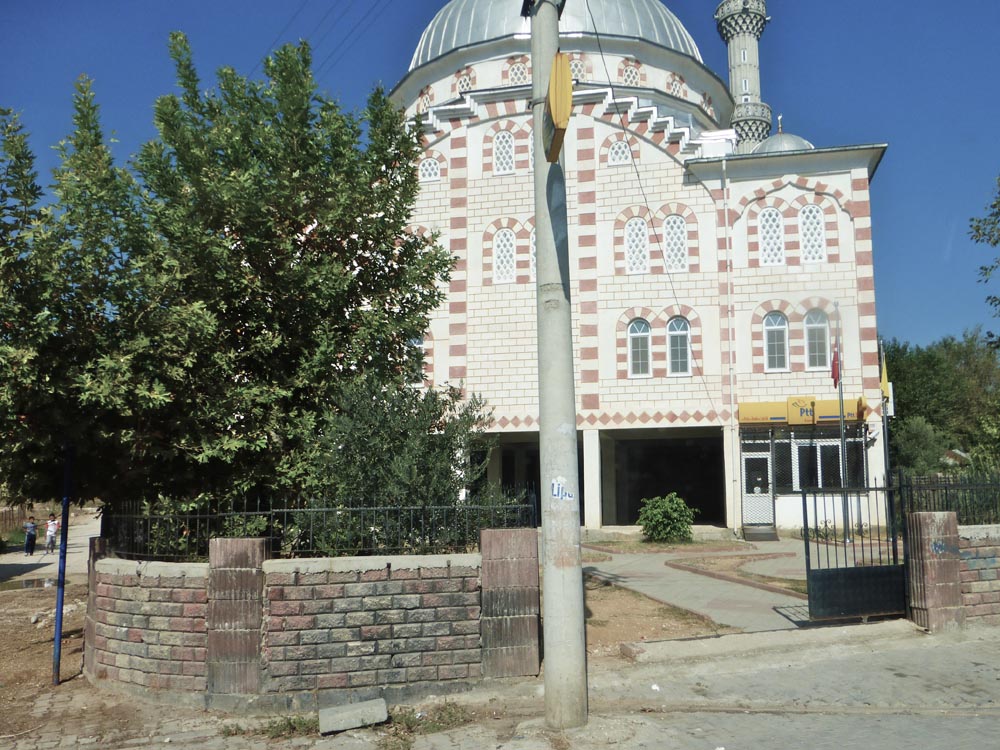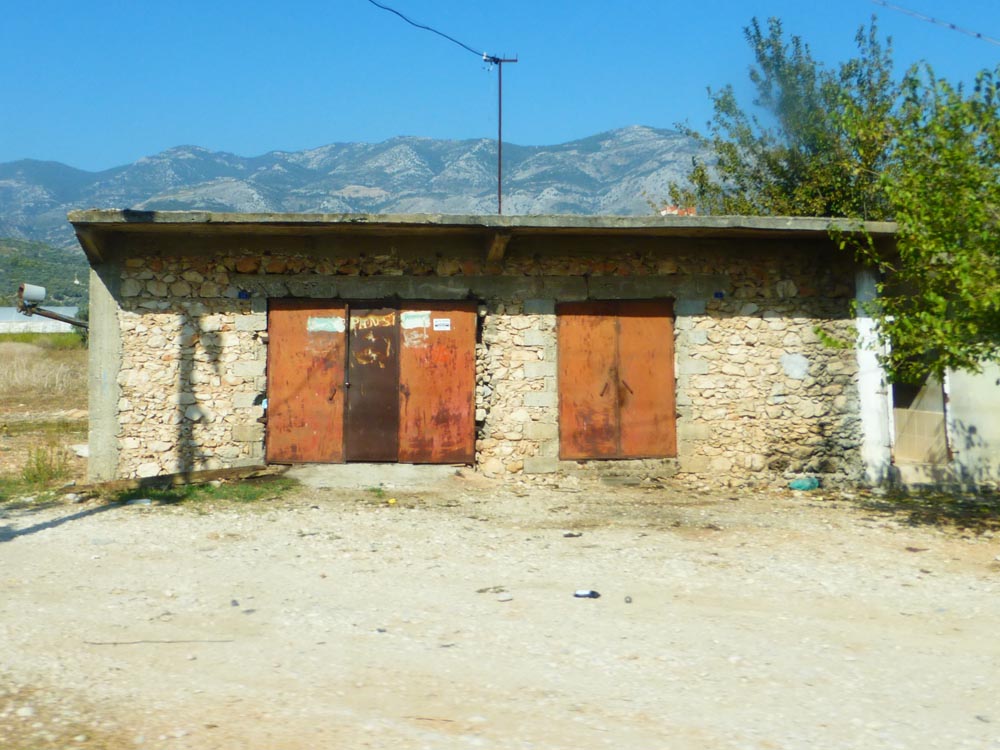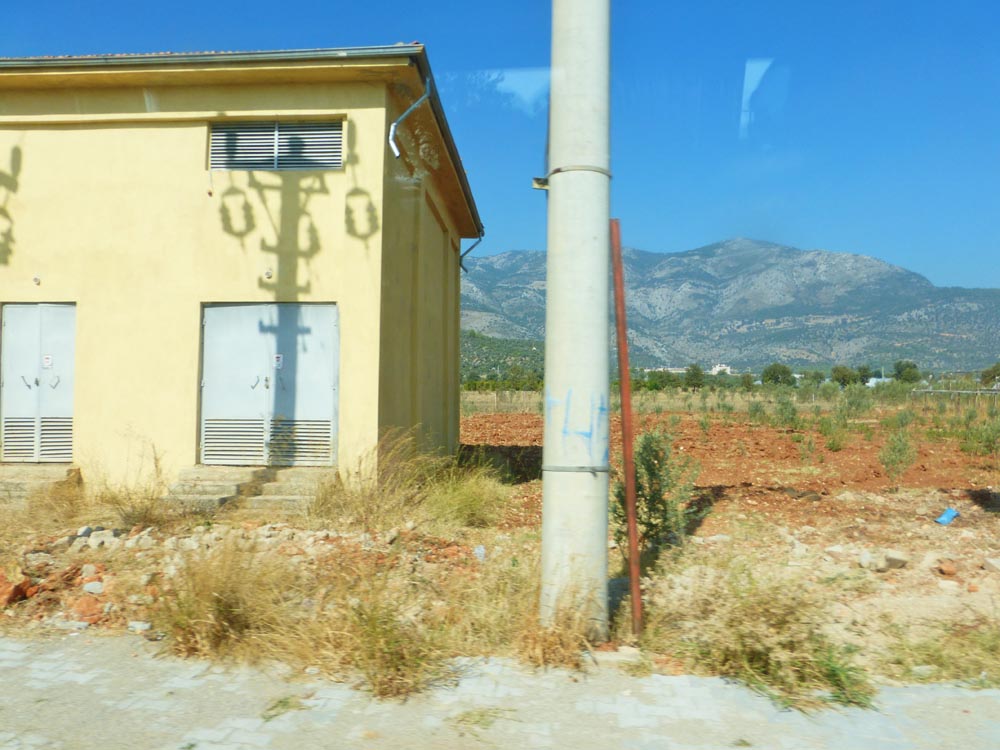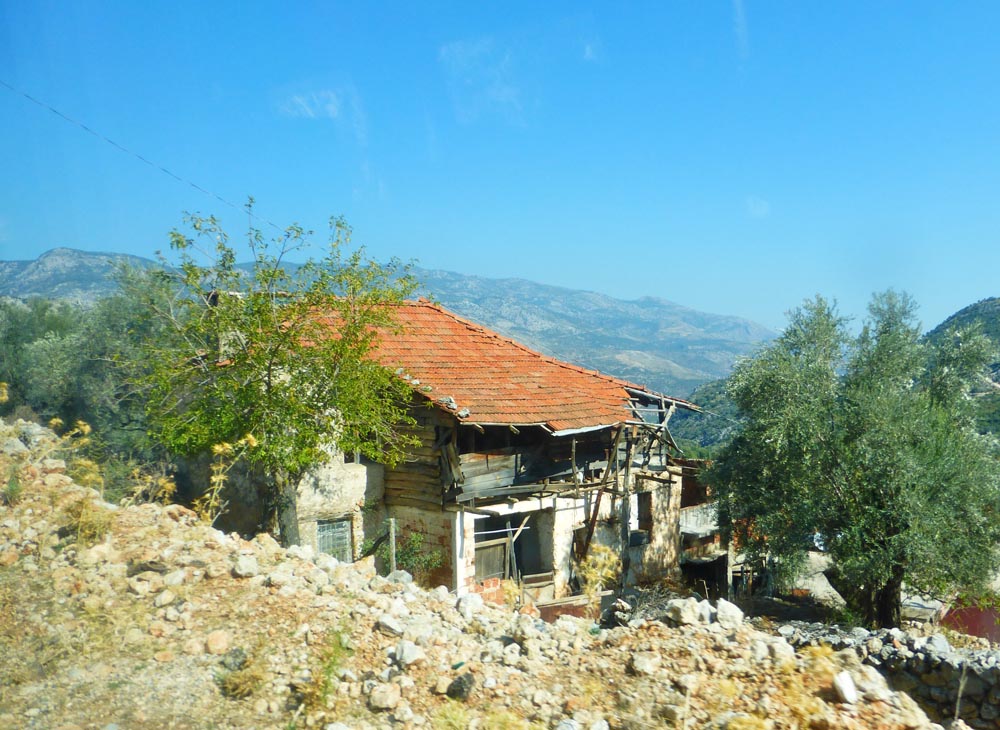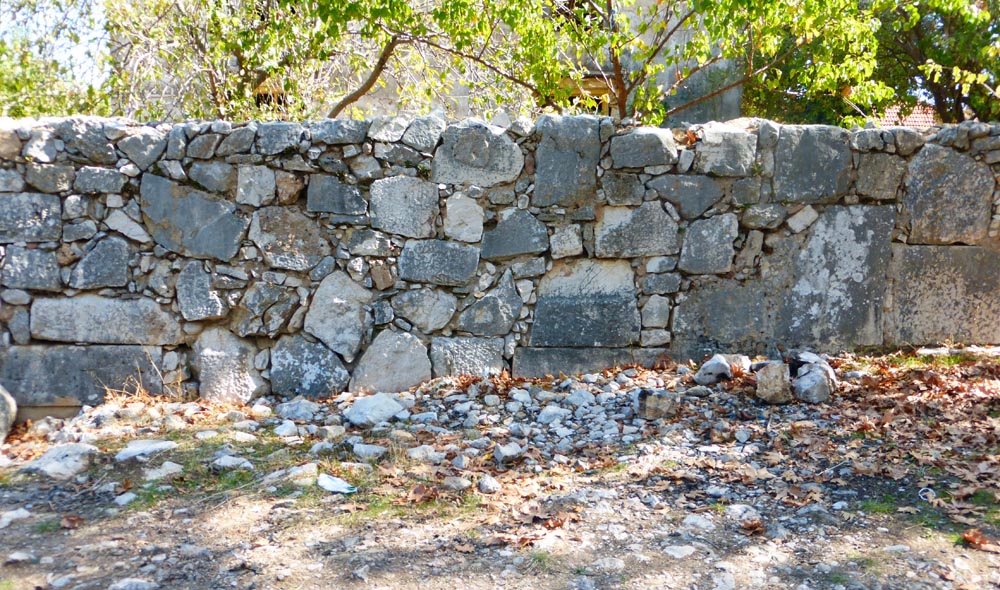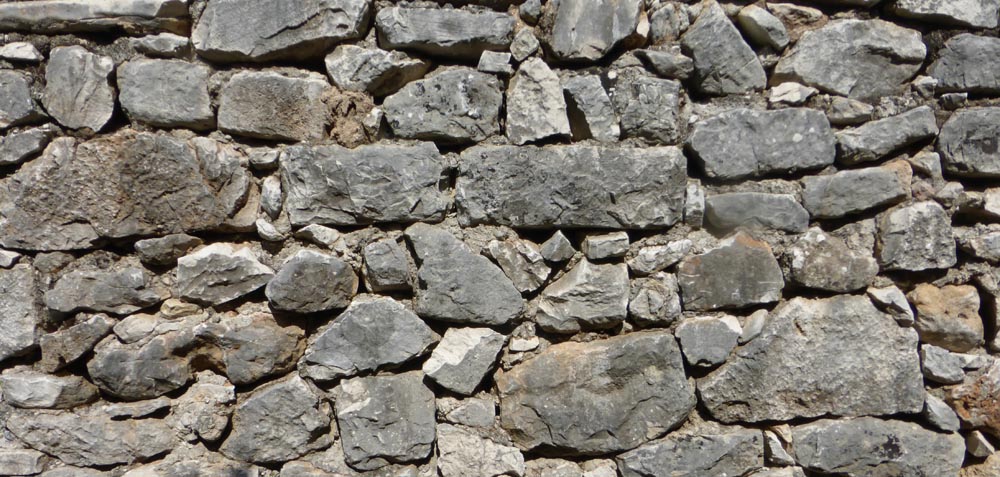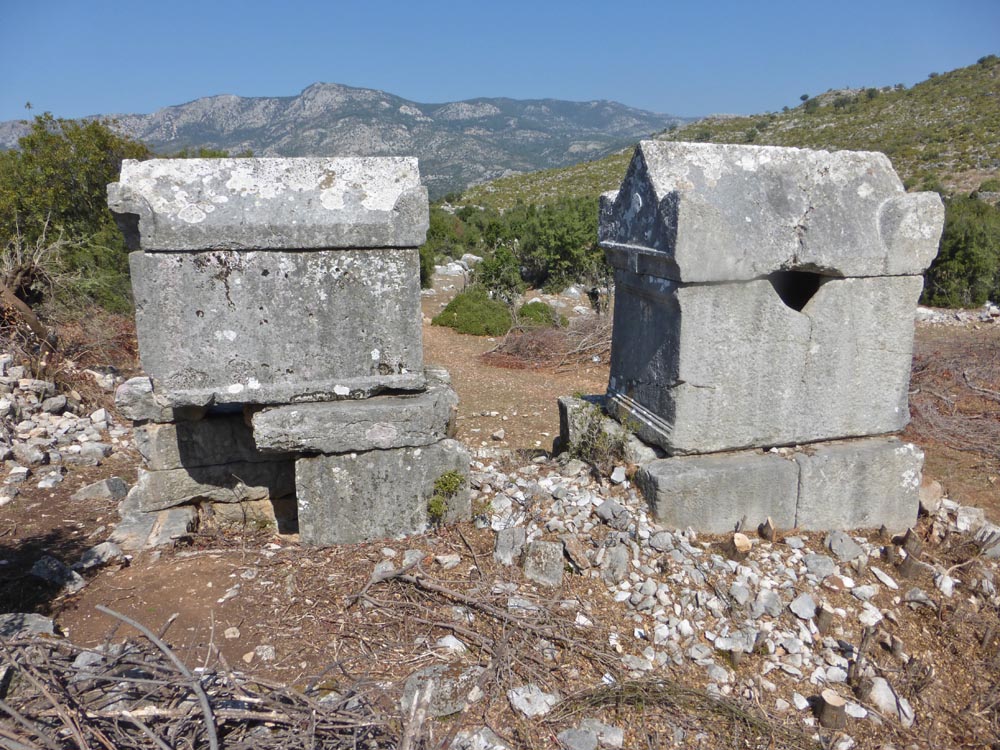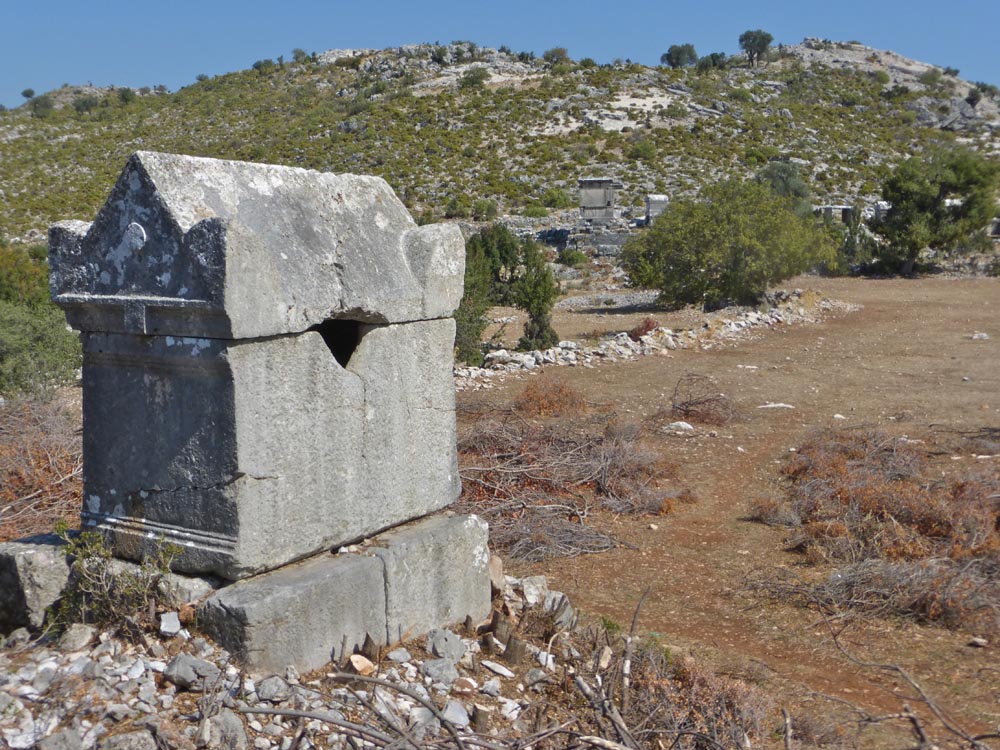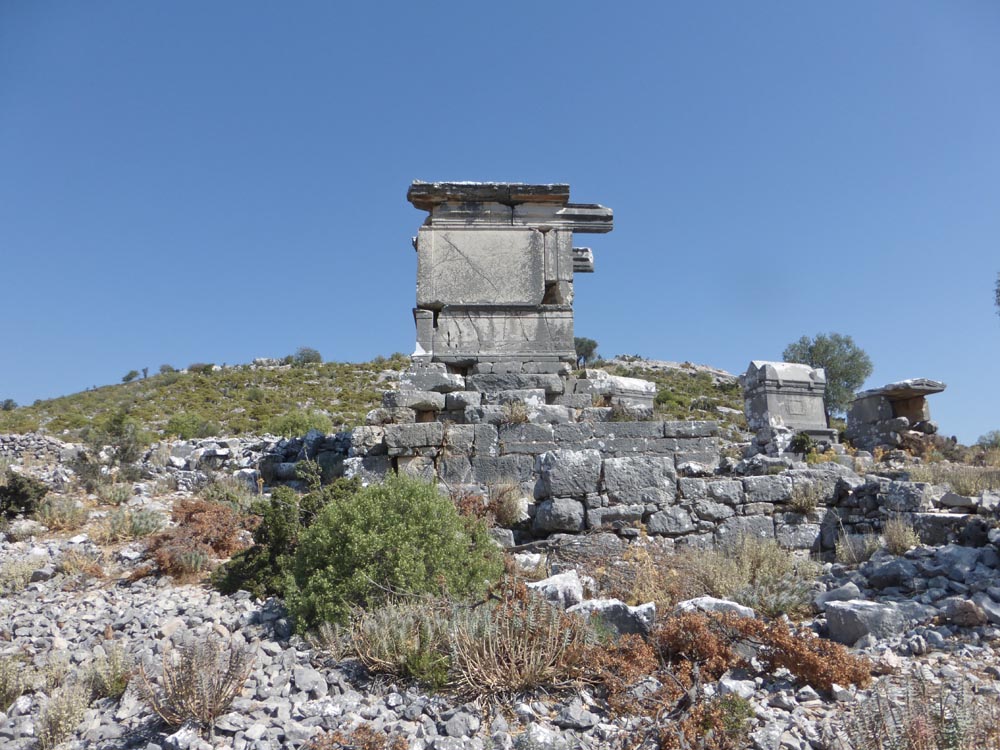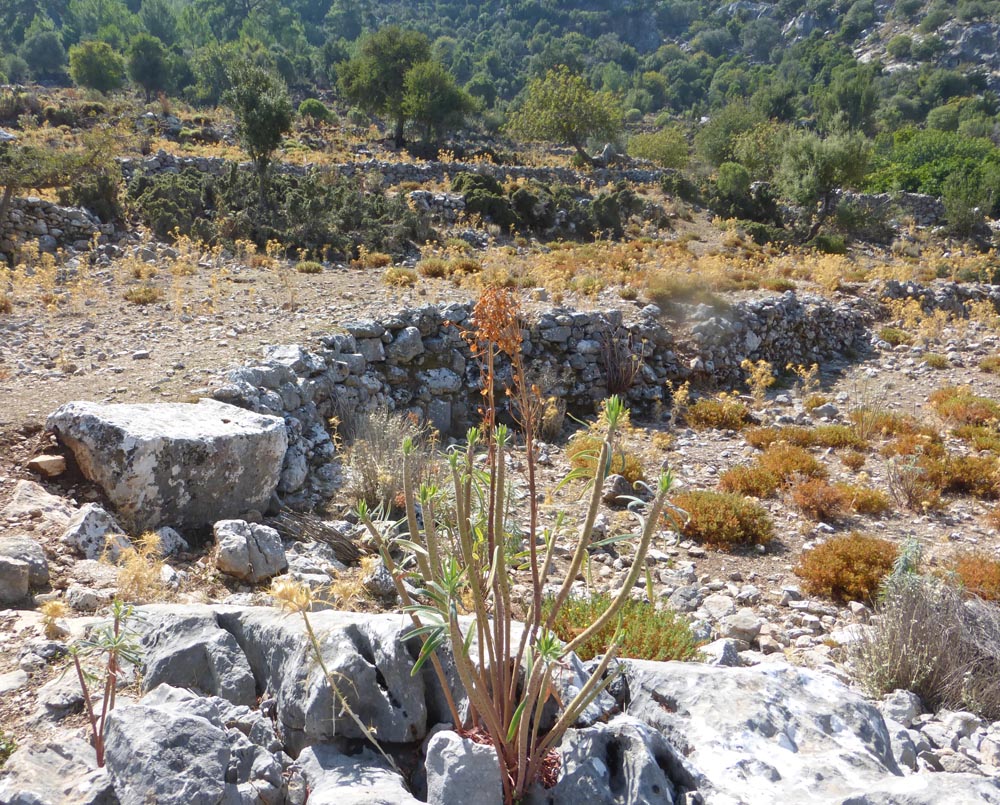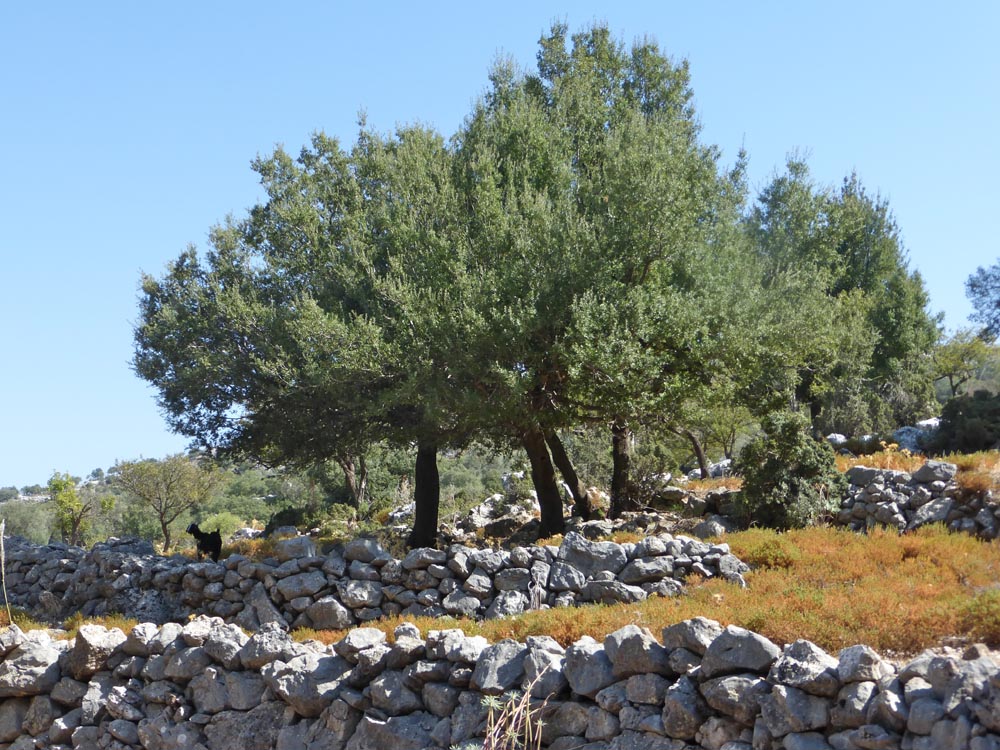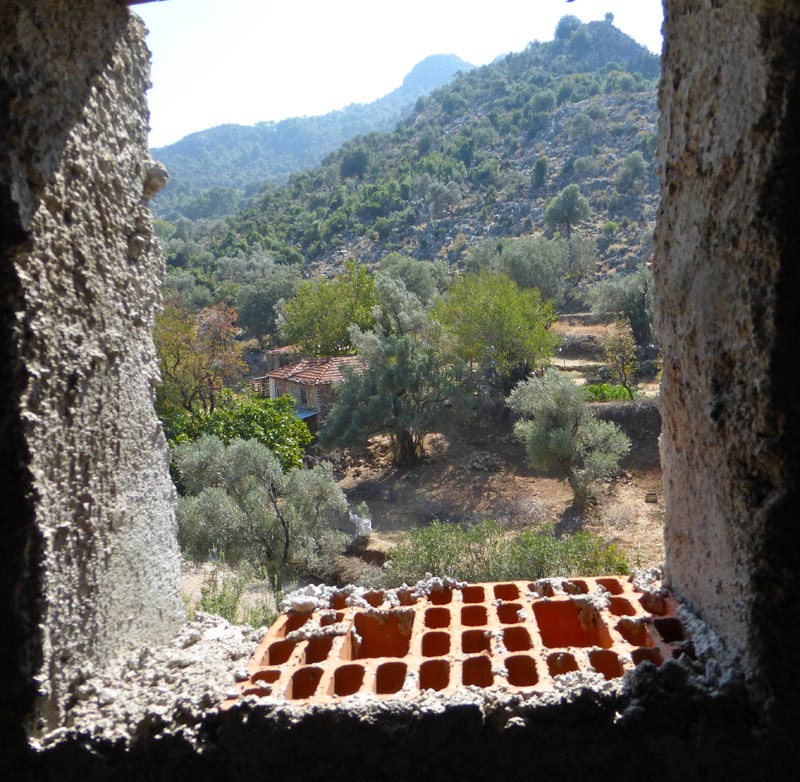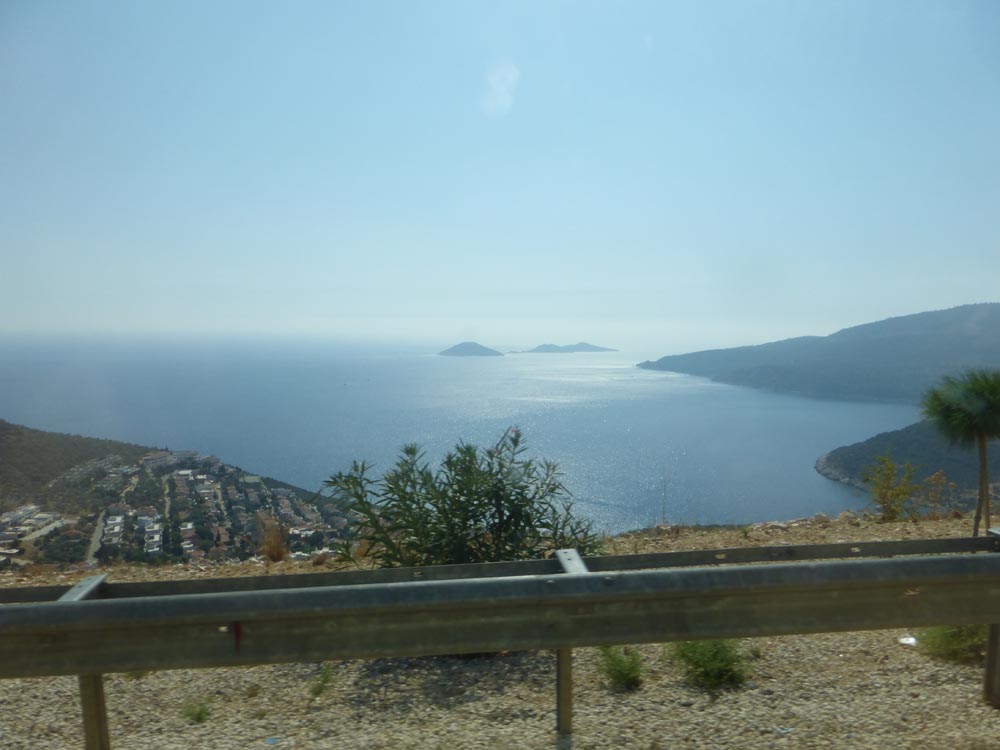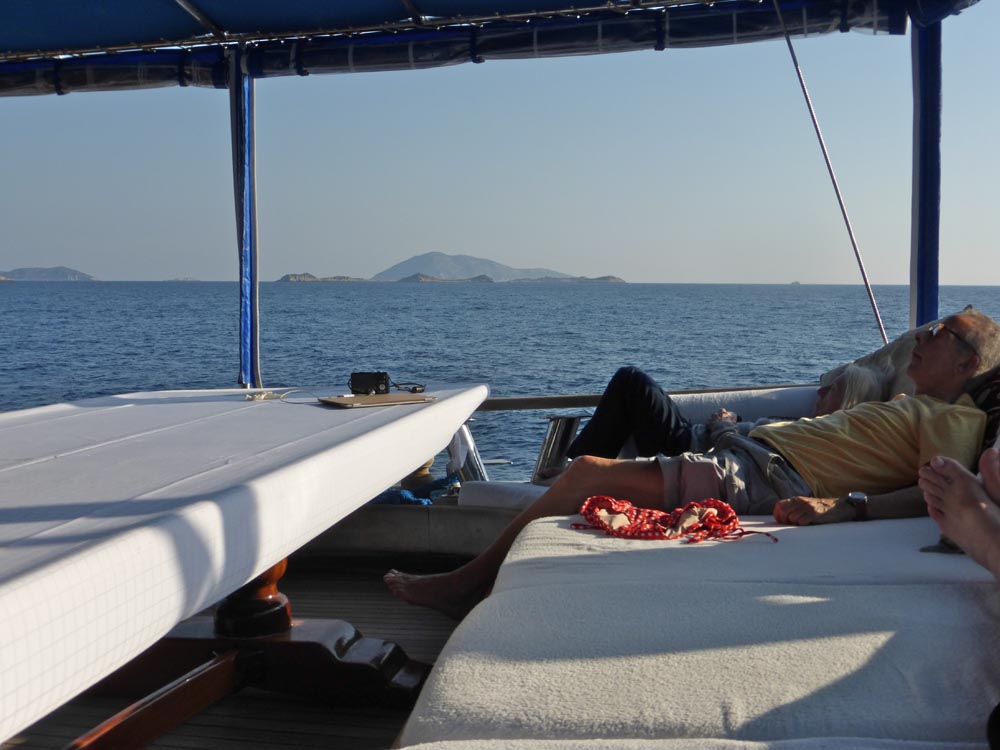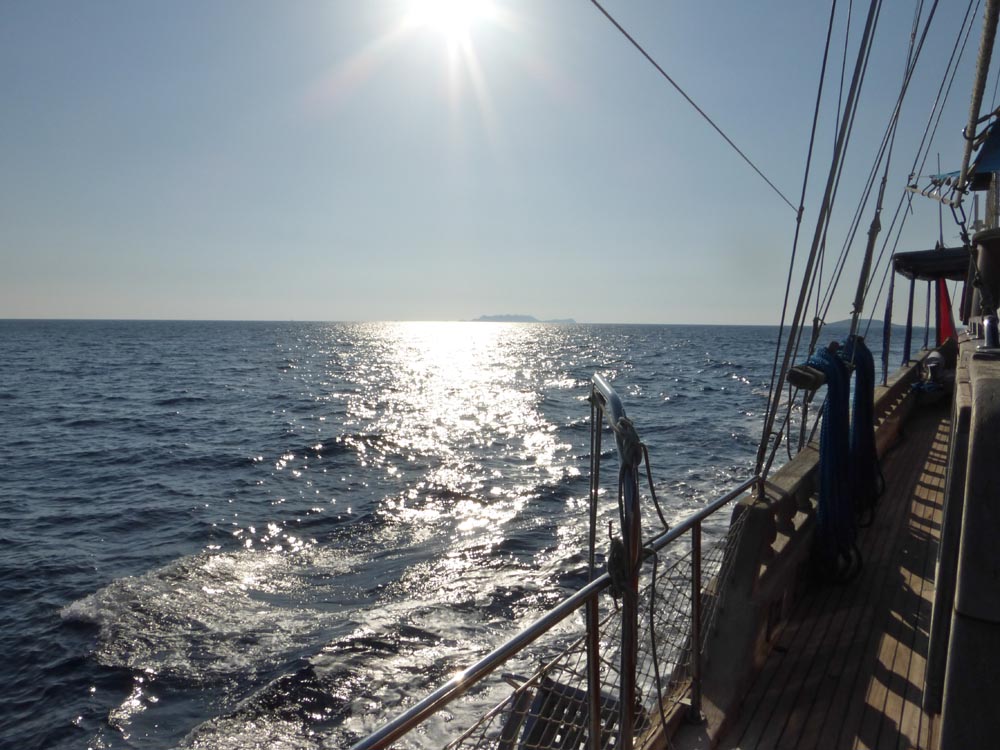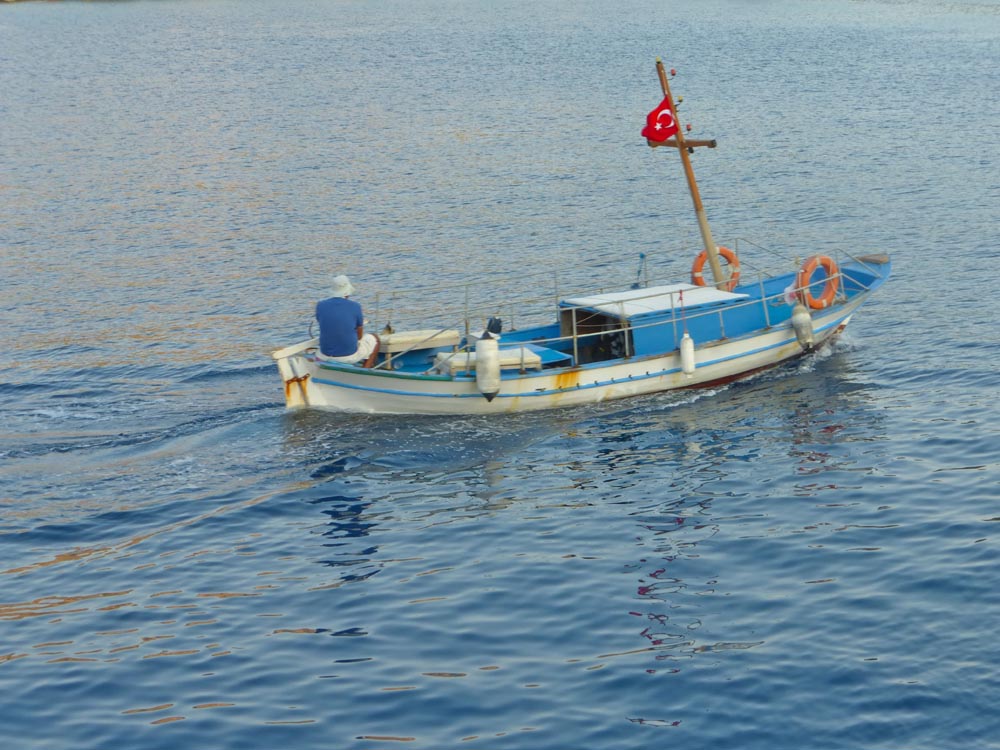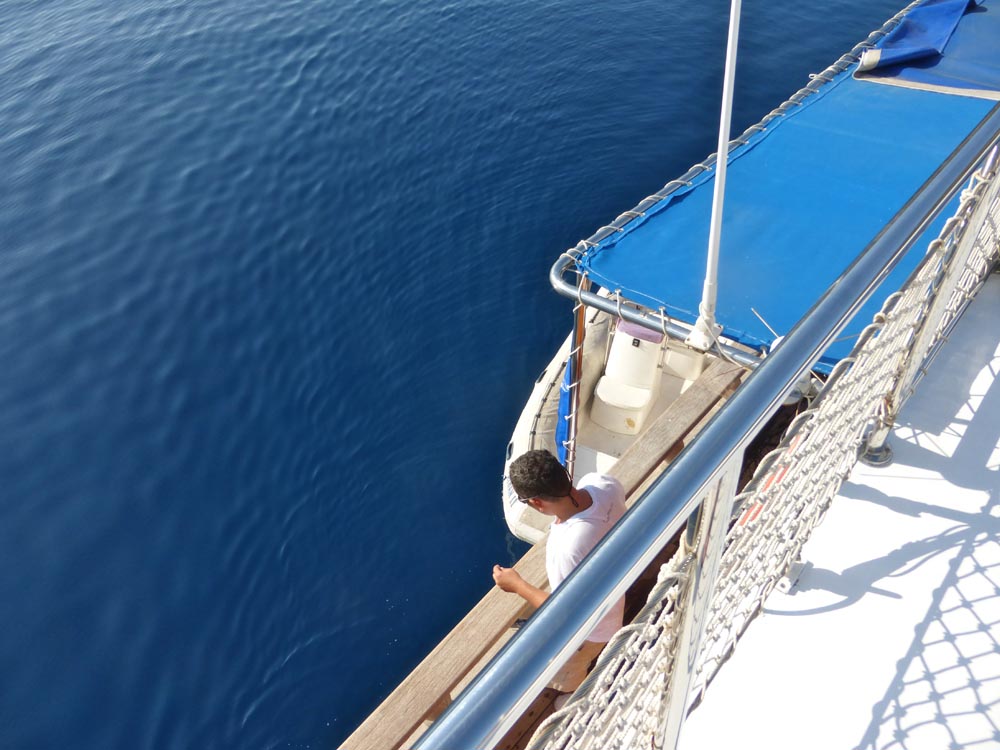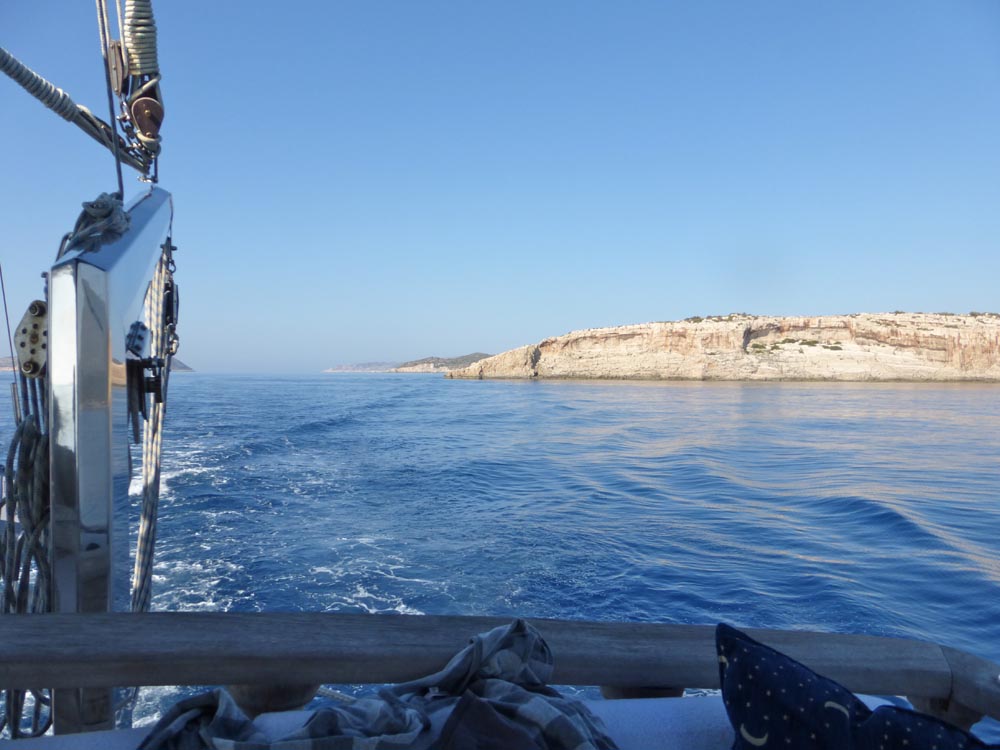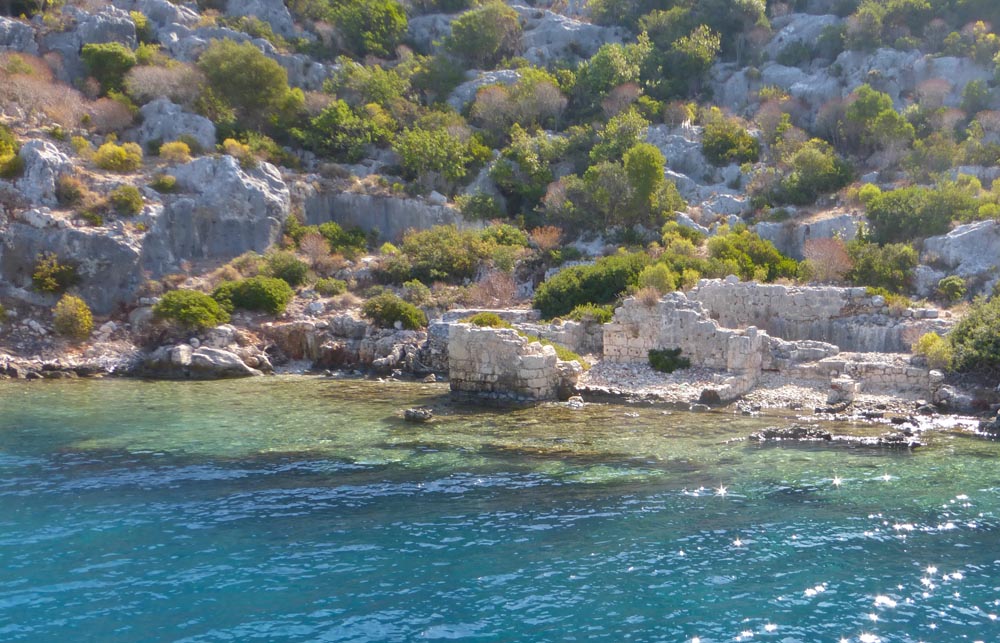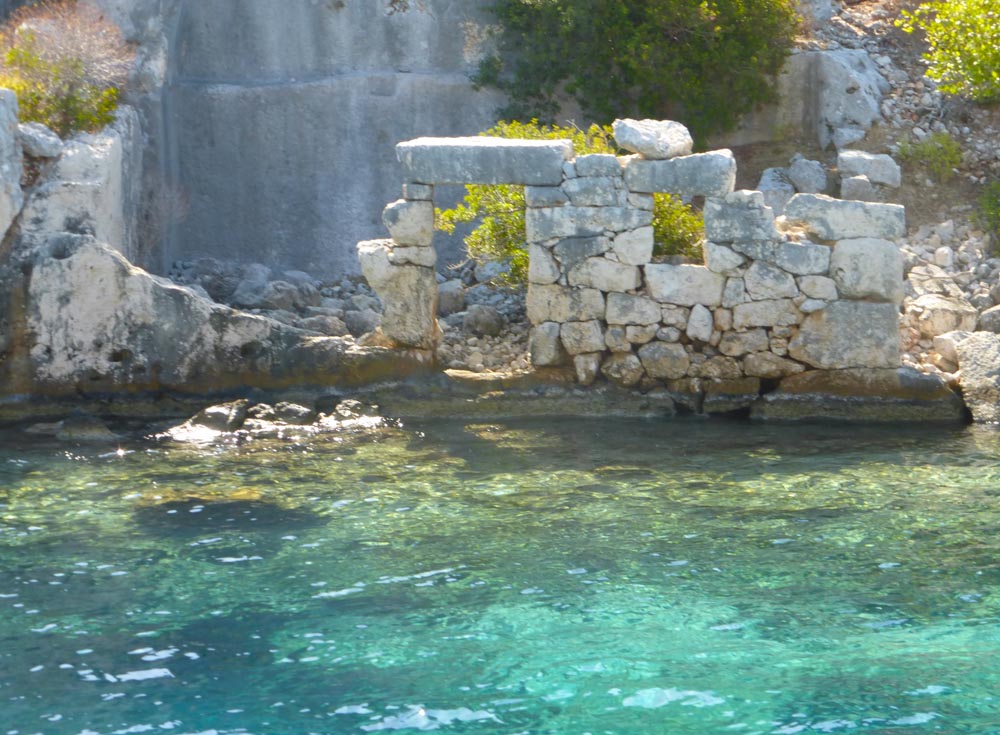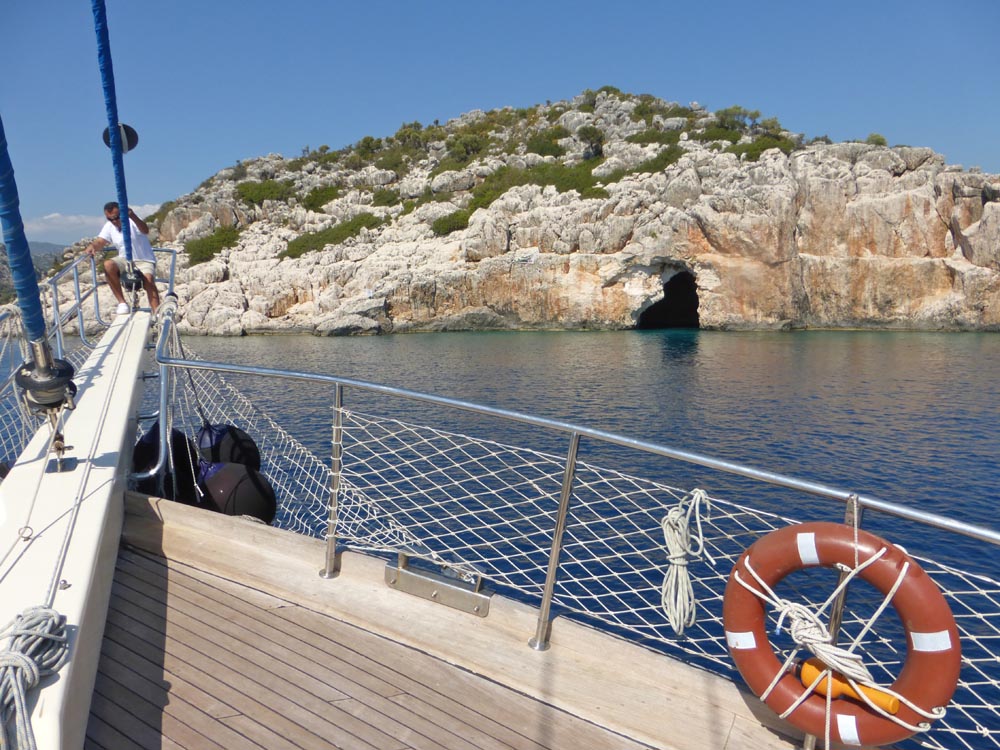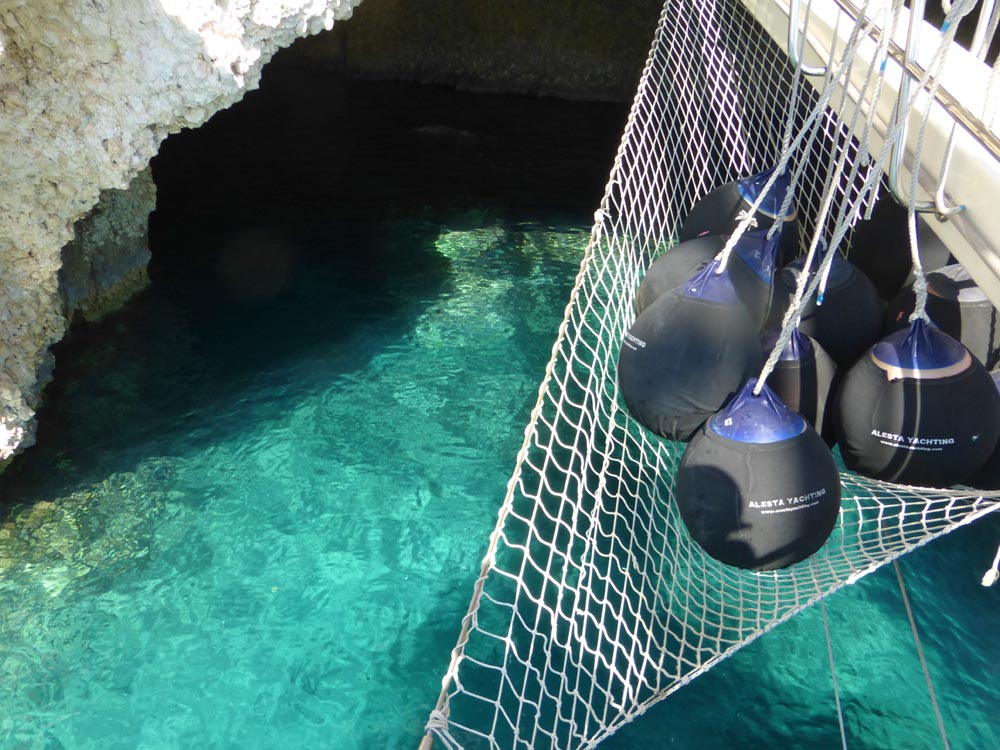*”binins” is an odd old Huerfano rendering of the word “business”, generally regarded as archaic]
Sunday’s dusk found the group entire back on the boat taking a last-light swim less than twenty- four hours since we’d first met, which, given how companionable we’d become as well as all we’d experienced in that short space of time, seemed incredible, though between the devious genius of the schedule and the chemistry of this particular group it was all making sense…as well as making for some excellent conversations and storytelling once we moved…
… to an ostensibly more secluded anchorage in the channel across from Gemiler Island for dinner and the night, well into which the gulet adjacent partied, though after their generator shut down the homemade renditions of classic rock ‘n’ roll became curiously soothing as we drifted off to sleep…to wake with the sun over Baba dagi;
Soon after the usual luxe breakfast we were cruising back to the beach and the van, which took us through the outskirts of Fetiye, various flatlands of industrial agriculture and around the mountains for the relatively serious business [binins] of archaeology, specifically to visit a “minor” unstudied Lycian tomb complex surrounding [and surrounded by] the present-day village of Sidyma, which we approached from the backside of the pretty much impenetrable coastal range we’d wandered the day before.
A mosque and buildings seen along the way;
Heinrich walked us through the scant interior of the village on narrow ways walled with stone and materials recycled from previous millennia to explore ancient remnants among the outlying overgrazed fields – Byzantine churches and Lycian tombs [ca. 3rd – 4th Century BCE], their reason and purpose in this particular location unknown for lack of historical documentation or onsite research; conjecture might suggest a ceremonial seat of governance for surrounding settlements as yet undiscovered, either obliterated by abandonment or, just as likely, continuing habitation. Overlays of Greek and later Roman influences, plus the more ephemeral [if extensive piles of cut stone can be viewed as ephemeral] Byzantine moved the area closer to historic time…the theme of successive waves of culture omnipresent even unto the present, where in the center of the village the mosque occupies the site of the church that supplanted earlier temples…
Most mysterious and impressive were the actual [and typical] tombs, which the Lycians persisted in scattering prolifically across their landscape for centuries, always adhering to the same basic design, and by their solidity and ubiquity not minor in the least…
From the Sidyma area we walked down, down past more Evidence, as well as evidence of a previously more robust agricultural economy; terraced olive groves and substantial walls of stone now left to the grazing goats, allowing me to imagine a far more domesticated landscape, inhabited by many more people – enough, say, to warrant the construction of such monuments over time – to a village from which the van took us, a shorter run this time, to the port of Kalkan, where Kayan 11 awaited us in what the brochure described as a “pretty little harbor”.
…but a note on the map our friends lent us for the trip said “Avoid”. Their reasoning became evident as we descended the hill into a town hugely comprised of hastily constructed expat condos [the result, Ugur told me, of a recent government ruling allowing foreigners to buy real estate] and all the infrastructure one would expect to serve them…transforming what had probably once been a modest fishing/tourist town with a pretty little harbor into a massive tourist pit.
The harbor, albeit overlooked by patios of drinking and luncheoning English, was nonetheless, once reached, pretty nice, even accommodating some traditional fishing boats. Most importantly, for us, it also contained our gulet, and lunch. Afterwards the crew facilitated escape across the bay to a quieter cove for swimming as dayboats [some the selfsame little double-ender fishers re-purposed for the task] ferried the last of the evening’s tourists from the beach nearby to Kalkan town for the night.
Tuesday morning we were cruising east and somewhat south soon after breakfast, heading for the island of Kekova to view the famous “sunken” [partially submerged, actually] city on its edge among a constant stream of like-minded tourists on boats of all sorts before nosing briefly into a sea cave…
…and from there to an idyllic lunch spot albeit, swimming, we were plagued and/or accosted by several little outboards piloted by young girls ostensibly hawking handmade scarves [when they weren’t looking into our portholes while talking on cellphones]…thinking they might be precursors to an ISIS’ navy made this rather disconcerting, but eventually they motored off seeking other opportunities as we settled down to the accustomed Lunch of Many Things… across the channel screaming celebrants took hysterical rides on what appeared to be a lime green inflatable couch towed behind a speedboat [not pictured].
[It occurs to Management that a few words and pictures regarding our conveyance may be overdue; “The Gulet is not a Gulag” up next. Stay tuned.]
